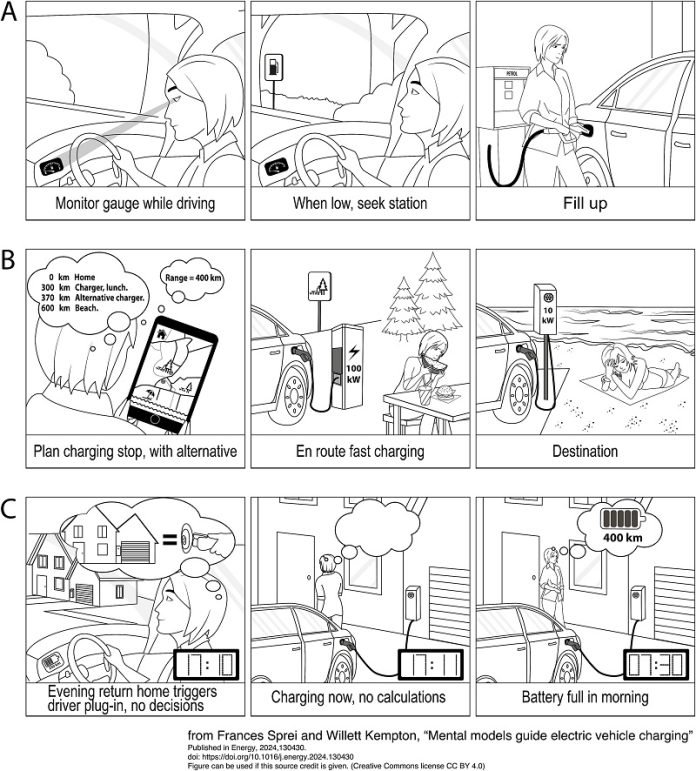
Electric vehicle (EV) drivers often worry about how far they can drive before needing to recharge, a concern known as range anxiety.
However, a new study from Chalmers University of Technology in Sweden and the University of Delaware in the U.S. suggests that this anxiety could be relieved not by bigger batteries or faster charging, but by changing how we think about refueling.
Traditionally, drivers of gasoline vehicles wait until their tank is nearly empty before refueling at a gas station.
This habit tends to carry over when they switch to electric vehicles, leading to unnecessary stress about battery levels and charging locations.
The study, published in the journal Energy, points out that adopting a new approach to charging could make EV use much simpler and less worrisome.
Researchers identified three main models of refueling behavior:
- The monitor fuel gauge model, where the driver refuels only when the fuel is almost depleted.
- The planning a trip model, which involves scheduling stops for refueling during a journey.
- The event-triggered model, where drivers charge their vehicle whenever they reach certain locations, such as home or work.
The third model, event-triggered charging, is identified as the most efficient for electric vehicle owners.
By simply plugging in their EV every time they arrive at home or work—places where the car is parked for extended periods—charging becomes a seamless part of their daily routine, similar to charging a smartphone.
This method reduces the need to constantly check battery levels or locate charging stations during daily commutes.
Professor Frances Sprei of Chalmers University, who led the study, explains that the real challenge is during long trips where planning is necessary.
However, for everyday use, the time spent charging an EV overnight at home or during work hours is no more than the few seconds it takes to plug it in.
This routine not only eases worries about charging but also tends to be cheaper and better for the battery’s health than rapid charging on the go.
To support this shift in charging habits, the right infrastructure must be in place.
The study emphasizes the importance of having accessible charging points at homes and workplaces rather than focusing solely on roadside options, which might interfere with the needs of pedestrians and cyclists.
Despite the trend towards larger batteries for longer ranges, the study suggests that most drivers would do fine with a smaller battery, as the only time a larger range is necessary is for journeys longer than six hours.
This focus on oversized batteries can lead to higher costs and greater resource use, which could be avoided.
In essence, by adjusting where and how often they charge, electric vehicle drivers can significantly reduce their range anxiety, making daily travel with an EV easy and stress-free.
Source: Chalmers University of Technology.



